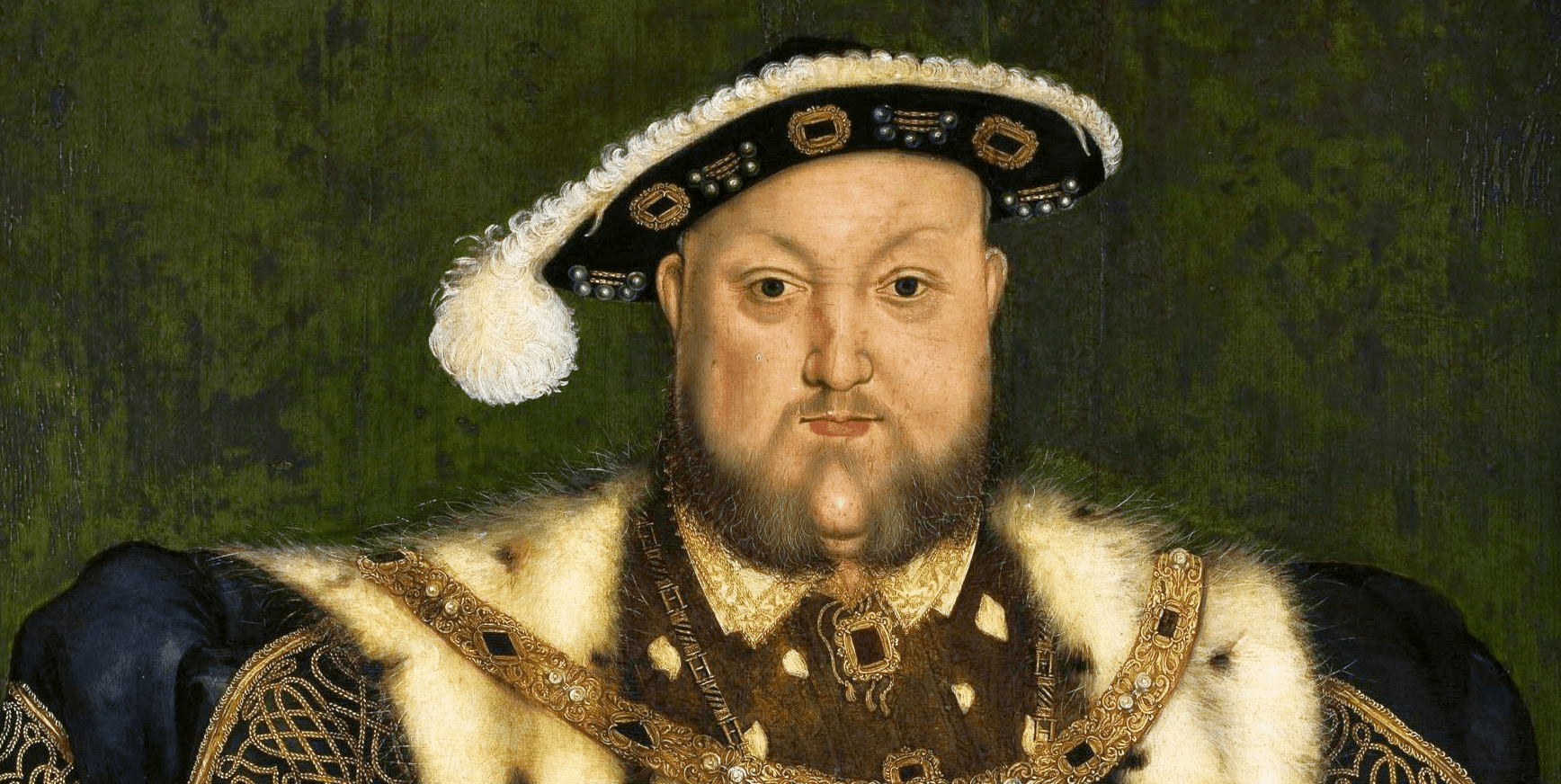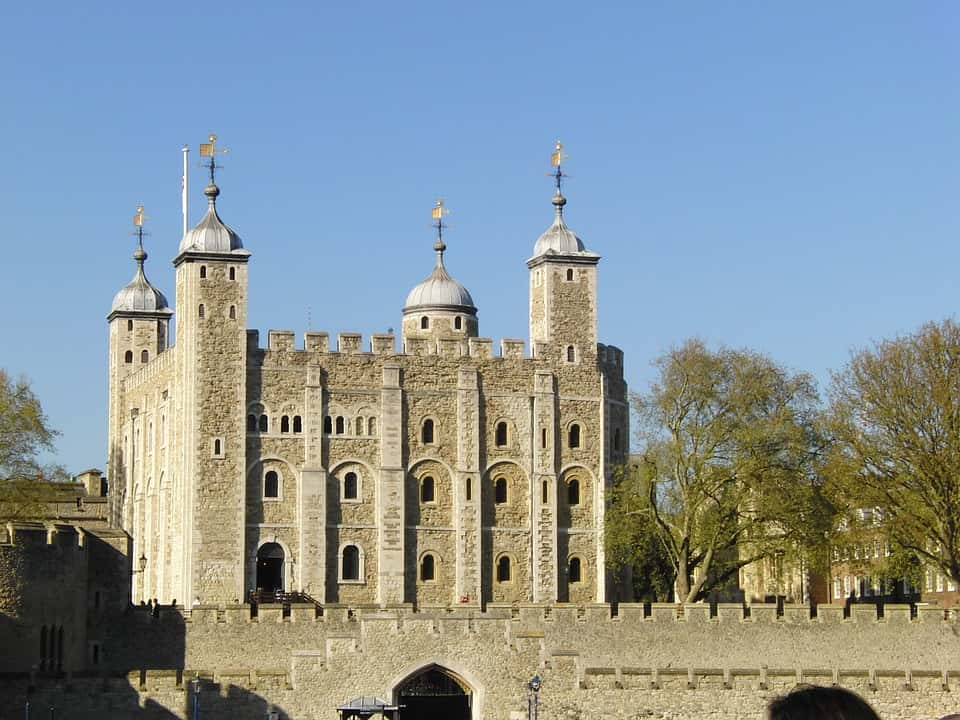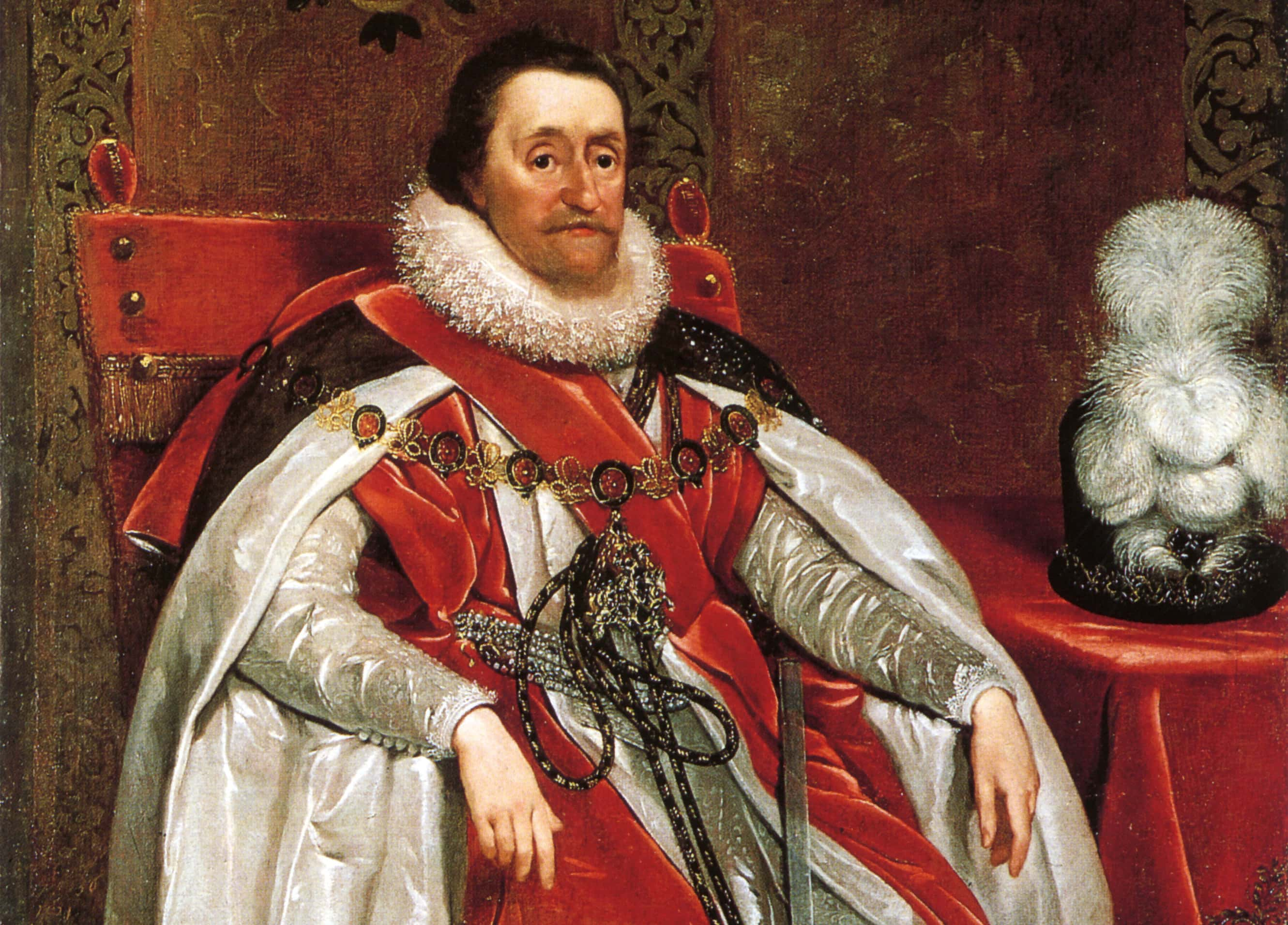Who can blame Margaret Tudor for being dwarfed in the shadow of her famous baby brother, King Henry VIII of England? Yet in all honesty, Margaret—as a thrice-married, husband-deposing, serial divorcee and regent of Scotland in her own right—pursued enough scandal to hold her own against Henry. Unfortunately, Margaret also had a serious problem with self-control.
While this character flaw was bad news for her political career, it certainly makes for a new, salacious, and lesser-told story in the Tudor canon. Indulge in these 43 queenly facts about Margaret Tudor, Queen of Scotland and saucy sister to Henry VIII.
1. You Never Forget Your First Pawn
Margaret was the first Tudor princess of England. Born on November 28, 1489, she was the second child—but oldest girl—born to Henry VII and Elizabeth of York, who welcomed a daughter at the exact moment they desperately needed foreign alliances. Just four years earlier, the Tudor dynasty had blossomed upon the deposition of Richard III. With the validity of his crown still in question, Henry Tudor had to play nice with the other European powers—and that meant having daughters to marry off to them.
2. Childhood is the Most Private Time of a Girl’s Life
Abnormally for a Tudor princess, Margaret’s childhood is barely documented. It’s mostly sure that she was named after her imperious maternal grandmother, Margaret Beaufort, who also served as her godmother. Princess Margaret was raised in Eltham palace with her younger siblings: the infamous Henry VIII, her sister Mary, and others that died in infancy.
3. Dad Never Liked Your Boyfriend
Even before she was born, Margaret’s future husband tried to depose her father. The Scottish ruler James IV had even once set up a pretender named Perkin Warbeck to try and pass as Margaret’s long-lost maternal uncle (one of the Princes in the Tower) and “true” heir to the English throne.
4. My Girl for Some Peace and Quiet
Before she was even 6 years old, Margaret’s was betrothed to the 22-year-old King James IV of Scotland. Her hand in marriage would seal England and Scotland’s sweetly named “Treat of Perpetual Peace,” in which King James agreed to stop sending pesky usurpers (and violent raids) to Henry VII’s doorstep. In exchange, Henry would give him his eldest daughter. Name a better deal?
5. Tudors Will Take Over the World!
The English people deeply protested Margaret’s first marriage—but not for the creepy age difference. Council members feared that marrying the oldest Tudor princess to James IV could pave the way for Scots to inherit the English throne (as they eventually would with James VI…). Henry responded, classily, that England was too big and important to be subsumed by the Scots; if things ever came down a wild thing happening like, say, every Tudor male dying out (which did happen), England would take over Scotland!
6. My Grandma, My Hero
When she was 10 years old, Margaret’s mother and grandmother tried to save her from a dangerously early marriage. As she reached double-digits, Henry VII was impatient to send her to finally marry the now 27-year-old King James IV of Scotland. Fortunately, Margaret Beaufort stepped in to remind Henry of about the perils of early consummation: Beaufort herself was just 13 when she gave birth to Princess Margaret’s father. Both mother and child almost died, and it permanently “spoiled” her ability to have more children. Thus, King Henry decided to wait a few years.
7. Too in Demand for Comfort
At the time of Margaret’s engagement, James IV of Scotland had several illegitimate kids over multiple mistresses. Her betrothed’s lusty rep added to her Beaufort’s fear that James would not wait to consummate the marriage with young Margaret.
 Shutterstock
Shutterstock
8. La Petite Princess
Not too much survives about Margaret Tudor’s appearance. However, it’s believed she was petite and slight of frame in her youth, which meant she got her father’s rather bird-boned Lancastrian genes—not her mother’s tall York genes, which produced big boys like Edward IV and Henry VIII.
9. Love in Absentia
Even before the advent of conference calling, Margret’s first marriage was a long-distance affair. At age 12, she was married to James IV of Scotland via proxy ceremony at Richmond Palace. Celebrations and jousts took place as if the groom were actually there. Although Margaret stayed in England for two more years, she was legally referred to as Queen of Scots.
10. Pre-Hollywood Magic
In 1503, aged not yet 14, Princess Margaret was finally sent to her husband in Scotland. King James orchestrated a “spontaneous” meeting for them in accordance with the chivalric tradition. He would “accidentally” come across the princess on a hunting trip while she was still on the way to the Scottish capital of Edinburgh. Nothing like planned coincidence to make a child bride feel at home, right?
11. Can’t Say Neigh to That Wardrobe
The “pre-honeymoon” of Margaret Tudor and James IV was a storybook romance with animal death. A stable fire had killed off the young queen’s favorite horses. Playing the savior, James came by to wipe her tears, replace the noble steeds, and also gift her some expensive riding gear made from cloth-of-gold. Money is only next to spontaneity in first impressions, after all.
12. Where We’re Going, We Don’t Need Stir-Ups
Wanting to ease his bride into marriage with a stranger, James defaulted to is go-to-move: party tricks. Entering the capital, James jumped directly onto his horse rather than use stir-ups like some boring dude. To the shock and joy of the Scottish people, he let Margaret ride “farmer’s wife”-style behind him into Edinburgh.
13. Worth the Wait
Despite the observed PDA throughout their first meeting and Margaret’s coronation, James did not immediately leave his mistress, Lady Janet Kennedy. That, and Margaret’s lack of children for the first four years of their match, suggests James did wait until Margaret was mature enough to begin regular “marital” duties with him. A low bar for decency in our age, definitely, but we can’t doubt that many people—including Margaret and her grandmother—were grateful.
14. Good News: You’re Getting Your Own Room! Bad News: Well…
It’s rumored that James IV cast all his illegitimate children from court to please Margaret. Before their marriage, James housed his half-dozen children across multiple affairs in the same nursey at Edinburgh. Soon after meeting their new stepmom, the kids were broken up into different households. This led historians to believe James—who liked to spoil Margaret—also indulged her by erasing reminders of his other liaisons.
15. Father in Filching Funds
Upholding his reputation as a royal cheapskate, Henry VII defaulted on paying Margaret’s staff of English attendants to Scotland. James wrote this his father-in-law—rather cattily I might add—that while he was not obligated to foot his wife’s bill, he would “gladly” do so.
 Shutterstock
Shutterstock
16. There Can Only Be One
Margaret had six children, including two sons named James. Unfortunately, all but the second James (future James V of Scotland) died as infants.
17. Praying in Style
Margaret was less inclined to public religious displays than her king-husband. It was James who made the 120-mile pilgrimage on foot to hand out alms and pray for Margaret’s recovery after her traumatic first pregnancy. She made this trip later but traveled by sweet royal litter—i.e., with horse and attendants.
 Public Domain Pictures
Public Domain Pictures
18. Show Me the Money?
Margaret is at the center of the mystery of Henry VII’s lost will. As English and Scottish relations broke down in 1511, the late King Henry’s will made some mention of a “legacy ”…at least, according to Margaret. The Scottish queen was supposedly left more money for Margaret in the document, which was supposed to have been in the ownership of her late big brother, Prince Arthur, but was then lost. Was this money so important?
19. Your Love Life or Your Son, Hun
In the will of James IV, Margaret was made official regent for their young son, Prince James, in the event of James Sr.’s death. However, Margaret could only keep her regency for as long as she remained a widow.
20. Margaret in the Middle
As per the old king’s will, Queen Margaret was declared regent over her 17-month-old son, James V. Unfortunately, Margaret’s power was deeply resisted. For one, people hesitated to let a woman rule as a king’s governor. The traditional appointee for governor was usually the next heir. In this case, that meant the French-based cousin of James V: John Stewart, Duke of Albany.
The Duke was a living embodiment of French-Scots relations, versus the English-biased Margaret. For this cauldron of reasons, Scotland became the middle child between England and France for much of Margaret’s tenure.
21. Grief Upon Grief
In the spring after James IV’s death, Margaret gave birth to his son, Alexander. Like all of Margaret’s children, except for James V, Alexander died just one year later, in December 1515.
22. No Good Deed Goes Unpunished
Margaret let a spy into her household. The lady-in-subterfuge was actually nun by the name of Isabella Hoppringle, who used her profession and closeness with the Queen to sell secrets to Henry VIII. In 1523, the jig was up. It looked like both Isabella and her convent were going to pay the price by angry Scottish nobles until Queen Margaret stepped in to fight for mercy on behalf of her old friend. In return, Hoppringle was to stop spying and be loyal only to Margret. Hoppringle returned the favor by continuing for the English. It’s now accepted Margaret was probably in on this.
23. Maybe in the Next Empire
Margaret could have become a Holy Roman Empress. Talks were in place to wed to her Emperor Maximillian after James IV’ death. Unfortunately, the widow made had other plans.
24. Trading Down Runs in Our Blood
In 1507, Margaret was passed over for her younger (and maybe prettier) sister, Mary Tudor. King Louis XII of France was offered the widowed Queen Margaret, but he preferred to wed the 18-year-old Princess Mary instead. Of course, Mary would elope to a lower-born man almost immediately upon widowhood. As you’ll see, some things just run in the Tudor family.
25. The Rebound Regent
On August 6, 1514, in what some consider the political blunder of Margaret’s career, she eloped with Archibald Douglas, Earl of Angus. As per the terms of old King James’s will, the marriage effectively ended Margaret’s regency over her son.
26. Brother, Can You Spare a Room?
Margaret did not have a peaceful exit from the Regency. Pregnant with her second husband’s child, she accepted her brother King Henry VIII of England’s help to flee from the country for the safety of her own life under the Duke of Albany’s regime.
27. My Next of Kin in Sin
For most of Henry VIII’s early reign, Margaret was the technically his heir. His marriage to Catherine of Aragon had failed to produce any healthy children until the birth of future Mary I in 1516—almost seven years into the marriage. Mary’s birth pushed Aunt Margaret down just one sport in succession. This probably informed Henry’s decision to keep Margaret close—and to also send her second husband back to Scotland to make peace with the pro-France, Albany-led regime.
28. A Coup d’Estranged Wife
By 1521, Margaret was both romantically and politically alienated by Angus, who was living with another woman and withholding control of her lands as well as place in her son’s government. Luckily for Margaret, the Duke of Albany didn’t really want the job of Scotland’s Governor. After all, he was mostly based in France and not eager to return to the tumultuous scene in Scotland. Margaret successfully campaigned for her once-rival Albany to return and seize the government from her own husband’s faction.
29. Take My Wife, Please
In November 1521, Margaret successfully waged a coup against her husband, Angus Douglas. The rebound beau was relieved of all his government titles. Douglas could only watch as his wife marched victoriously into Edinburgh, side-by-side with their once mutual enemy, the Duke of Albany.
30. No Hard Feelings?
Here’s the kicker: even after her coup against him, Margaret still begged Angus to forgive her actions. Of course, she still regretted ever marrying him, but the Queen did feel rather bad about so publicly humiliating Angus by overthrowing his cheating pantaloons out of office.
31. Stayeth Away from Mine Sister!
Imagine Henry VIII yelling at you for “meddling” with his sister. To some people, Margaret reconciled too well with her rival, the Duke of Albany. Rumors swirled that the Queen of Scots was having an affair with him; King Henry accused him of such, almost screaming to Albany in a letter that he was “inciting and stirring Margaret to be divorced from her lawful husband for what corrupt intent God knoweth.” Oh, I’m sure you “knoweth,” Henry…
32. Third Time Is the Harm
In reality, Margaret’s new boytoy was not the Duke of Albany but another Stewart family member: the younger Henry Stewart. The queen lavished her beau with titles, including Lord Methven, which alienated the senior nobility. Not a wise thing to do for the freshly re-minted queen of government…
33. Marriage So Bad, You Make a Queenly Run for It
Margaret was officially divorced from Archibald Douglas in March 1527. Just one year later, she married Methven, who turned out to be even more adulterous and wasteful than her second husband. 10 years later, Margaret was petitioning for her second divorce. How miserable was she? Several times, Margaret tried to escape across the Scottish border back to her home country. She was carried back to Edinburgh each time.
34. No Moms Allowed
After June 1528, James V began to rule for himself—but Margaret held no role in her son’s government. In fact, mother and son didn’t seem to get along when forced to interact directly. Margaret often complained about lack of money and having “to follow her son about like a poor gentlewoman.” For his part, James couldn’t even make it in time for her death on October 18, 1541. She was aged just 51 years old.
35. Where’s My Baby?
Margaret spent the rest of her life petitioning for Henry VIII to return her younger child, Lady Margaret Douglas. The young woman was raised in the English court, where she followed her mother in scandal: this Margaret also an affair with a courtier and landed herself in the Tower of London. While the younger Margaret was released, she remained at her uncle’s court and never saw her mother again.
36. My Zombie Ex
During both times that Margaret sought divorce, she waged a scandalous argument: her first love, James IV of Scotland, might still be alive after all. Of course, her complaint didn’t fly.
37. My Blood Will Love On
After a lifetime of political farces, Queen Margaret Tudor of Scotland got the last “laugh” over her famous brother. Her descendants are the ones who sit on the throne today, not Henry’s. Henry VIII died without grandchildren, but Margaret was grandmother to Mary, Queen of Scots and thus great-grandmother to James I, who succeeded Elizabeth I on the English throne. Therefore, today’s British royal family owes their claim via dignified descent from the scandalous Margaret.
38. My Brother, My Lover, and My Inheritance
In 1509, Margaret’s little brother Henry VIII ascended to the throne of England. Unfortunately, the Treaty of Perpetual Peace that had made Margaret’s marriage began to break down. Due to Scotland’s conflicting interest with allies in France (England’s enemy), tensions rose until baby brother Henry threatened to disinherit Margaret (and thus, her Scottish children) from the throne.
39. Eye See…Your Death, Hubby
It’s been mythologized that Margaret had a premonition of King James’s doom. She apparently woke from a nightmare of James falling from a great height and dying. In the dream, Margaret had also lost an eye. She insisted the vision was real—and even cited non-dream rumors that Queen Catherine of Aragon was collecting an army against him—but James insisted it was just anxiety coming for her at night. This story might have been edified over the years, but it’s certainly foreboding. At least Margaret never lost that eye.
40. Dressed to Violently Oppress
Margaret’s nightmares came true in 1513: her beloved James IV charged into the Battle of Flodden only to be violently slain by the English forces of Margaret’s sister-in-law, Catherine of Aragon. Catherine had the dead Scottish king’s bloody coat retrieved and sent it to her husband Henry VIII as a “love token.”
41. Wipes Your Tears on This Deal
Catherine of Aragon was Margaret’s childhood friend and sister-in-law, but she was also complicit in the slaying of Margaret’s husband. This awkward triangulation did not stop Catherine from offering the 24-year-old, widowed, and pregnant Margaret some “comfortable messages.” Of course, these soothing was sent with a catch: Catherine would ensure peace from England’s if Margaret would quell the Scots’ rage about the whole “slain king” thing.
42. Well, That Was Fast
Margaret’s marriage to Archibald Douglass produced one living daughter, Lady Margaret Douglas. Their bliss was not to last. After a year away in England, Margaret returned to Scotland to an upsetting sight: Douglas was living with another woman on Margaret’s dime.
43. Don’t Give Him Ideas
Upon discovering her second husband’s adultery, Margaret immediately sought to divorce him in 1518. Her brother, Henry VIII, was aghast that his big sister would treat the sacrament of marriage so lightly. Centuries later, Henry’s offense remains the source of riotous laughter for many historians.
Sources: 1, 2, 3, 4, 5, 6, 7, 8, 9, 10, 11, 12, 13, 14, 15, 16, 17, 18, 19, 20


















































